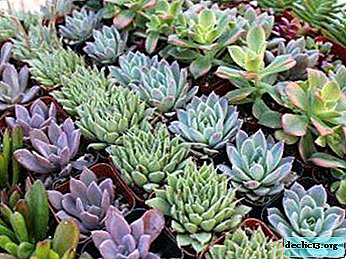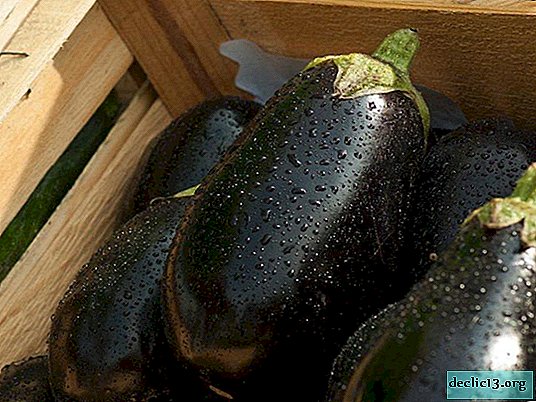Diseases and pests of tagetes

Marigold flowers got their name because of the unusual shape of the petals - in the form of velvety fabric.
In different countries and cities, the plant has its name: Chernobrivtsi in Ukraine, Mary's gold in London, students' flowers in Germany.
You can meet bright inflorescences everywhere: from a garden lawn to a city park.
Are marigolds sick? How to detect disease and pests, how to treat a bush?
What is this plant?
The subspecies belongs to the Astrov family (Asteraceae). The branches are sprawling, the bush is compact in shape, its height varies depending on each particular variety - from 30 to 120 cm (for how to care for undersized varieties of marigolds, read our article). The root system is fibrous, the usual leaf shape is dissected (less common and serrated foliage).
Marigolds are divided into annual and perennial (to learn about the types and varieties of perennial and annual marigolds, as well as see photos of plants, here). Flowers can be simple and double, the color palette is diverse (white, brown, yellow varieties). At home growing inflorescences of medium and large size, in conditions of wild germination - small flowers.
Learn more about the varieties of marigolds, as well as see photos of plants, here.
Common diseases
On a note. Flowers emit a specific smell that creates a natural pest protection.A special aroma is formed due to the high content of phytoncides. Diseases and problems with the structure of the bush most often arise due to improper care.
Why do not bloom?
 The lack of color can cause an abundance of fertilizers and moisture (the bush gives all its forces to the formation of green mass), drought, lack of air in the soil or lack of natural light.
The lack of color can cause an abundance of fertilizers and moisture (the bush gives all its forces to the formation of green mass), drought, lack of air in the soil or lack of natural light.
How to diagnose a problem? The bush looks healthy, but there is no ovary on the stem. A distinctive feature of this problem is thick and fleshy leaves. What to do to enhance flowering?
- Add the sun. The sun's rays will make the flowering magnificent and chic. Marigold seedlings need to be planted in areas where sunlight enters in moderation (scorching rays will lead to the gradual drying of the bush). Natural light activates flowering in the morning and evening, and on hot noon the bush can be covered with agrofiber, forming an artificial shadow.
- Watch the watering. When the first buds are formed, it is necessary to reduce the number of waterings. Excess moisture inhibits flowering and provokes putrefactive processes. It is advisable to water the bushes once every 2 days (the water should be warm).
- Fertilize moderately. It is allowed to feed the bush only when the stem is above 10 cm. You need to apply complex fertilizers before or after flowering. It is forbidden to use fresh and clean humus. A suitable option is a mixture of nitrogen and potassium, phosphorus and trace elements. To 10 liters of water add 2 tbsp. top dressing and apply to the soil in the evening.
- We provide air flow. The soil needs to be loosened and weed after each watering. For the best effect, moist moist soil should be covered with hay or sawdust - this minimizes the rapid evaporation of moisture.
What causes the leaves to turn white?
- Why do the leaves turn white? The first reason is mildew infection. White spots appear, leaves at the edges can wrap. To get rid of the disease, you need to cut off the entire affected foliage and treat the bush with a special solution (dissolve 10 g of copper sulfate and 20 g of liquid soap in 1 liter of water). Perform the procedure after lunch.
- Another possible cause is infection with a spider mite. Such a pest appears due to poor air humidification. Signs of infection:
 whitish coating on the leaves (resembles a thin layer of cobwebs);
whitish coating on the leaves (resembles a thin layer of cobwebs);- after a couple of days, the leaf dries.
You can fight with a tick using insecticides or alternative methods. To treat the bush with pesticides, strictly adhering to the instructions (for each specific drug, the dosage may be different).
To prepare a home remedy, you can take 3-5 large tobacco leaves and pour them with boiling water. Insist a day. Cool the resulting composition and spray the infected bush 3-5 times a day. An auxiliary measure in combating spider mites is the constant humidification of air near the bush (you can spray the leaves with warm water).
Why wilt?
Flowers are unpretentious in leaving, but sudden changes in temperature can negatively affect the condition of the bush. Marigolds may begin to wilt due to cold watering (if it’s hot outside).
On a note. It is better to carry out watering in the evening with water, which is heated all day in the sun.The bush may also wither due to poor seeds or inappropriate soil. For the next season, it is better to buy seeds in a special store (the material will be better than with self-collection). You need to sow marigolds on another site, after having previously introduced into the soil a mixture of turf, humus, peat and sand (1: 1: 1: 0.5 ratio).
About what to do if marigold dries, leaves fade and buds turn black, read in our material.
Photo
Next, you can see photos of diseases and pests of marigolds:




What to do if the bush disappears?
The bush most often disappears due to the development of a black leg. This is a fungal disease that affects the stem on its lower part. White spots form on it, then they turn brown, the processes of decay begin, and the bush withers and dies. Treatment with a fungicide or potassium permanganate solution (1 teaspoon per 2 liters of water) will help to eliminate the signs.
To prevent disease, marigolds should be planted in disinfected and pickled soil. How to disinfect soil? The procedure can be performed with the help of chemicals - treatment with 3% solution of copper sulfate or adding a composition of oxychome and copper to the upper layer.
Another option is biological disinfection. In late autumn, the Baikal preparation (EM-1 model) must be applied to the soil. Under the action of its components, harmful microorganisms will be destroyed, and the soil will be healed.
Gray rot is a common cause of bush loss. Among the causes of the disease, low air temperature, dampness and a dense landing are distinguished. In the list of characteristic features are brown small spots along the veins on the leaf, its subsequent drying. It is better to tear out infected plants with the root and destroy (cannot be treated).
Attention! The bush also disappears due to the development of root rot. The infected plant lags behind in growth, its stem and leaves turn yellow.For the prevention of the disease, it is necessary to timely cut off the dead parts from the bush, and if the plant is infected strongly, uproot and throw it away.
Some insects also affect the condition of the bush:
- snails and slugs (eat leaves at night);
- aphid;
- whitefly (eats juice from leaves, carries the risk of infection with sooty fungus).
You can get rid of pests by treating the bush several times with any complex insecticides. Insect Prevention - Marigold treatment with a mixture of warm water and mustard.
To prepare it, mix 0.5 liters of water and 2 tbsp. dry mustard. Put the ingredients in a water bath, wait for the mustard to dissolve. Cool the product, pour it into the sprayer and treat the bush in the early morning and evening.
Another proven folk method is to pour a layer of ash mixed with lime under the bush (take components in equal amounts).
Preventive measures or how to care
 The healthy look of marigold depends on the quality of care. With an abundance of moisture, the flowers are affected by rot, and with a drought, a tick starts on the leaves. What are the basic care rules you need to know?
The healthy look of marigold depends on the quality of care. With an abundance of moisture, the flowers are affected by rot, and with a drought, a tick starts on the leaves. What are the basic care rules you need to know?
- The bush requires moderate lighting. To create a natural shadow, you can plant higher plants next to marigolds.
- Sowing seeds in open ground is not necessary until mid-May (about the features of growing marigolds from seeds, read here, and from this article you will learn how and when it is better to collect marigold seeds). Before the first seedlings appear, the soil should be covered with protective material (lutrasil).
- When growing seedlings in a pot, drainage (crushed stone or coarse sand) should be put on its bottom - a preventive measure against fungal diseases.
- Abundant spring fertilizer provokes active growth and delayed flowering. Potassium, phosphate and a low concentration of humus are suitable as dressings (you can find out how to feed marigolds for plentiful flowering here).
- Marigolds easily tolerate a transplant (even in a flowering state).
Marigolds are unpretentious and unusual plants with a bright flower and a pleasant aroma. For the prevention of diseases, it is advisable to treat the soil with fungicides or a weak solution of potassium permanganate. If the stem is infected with a fungus, it is better to throw a bush in order to maintain the health of neighboring plants. Pest control is the treatment of the bush with insecticides.

 whitish coating on the leaves (resembles a thin layer of cobwebs);
whitish coating on the leaves (resembles a thin layer of cobwebs);















